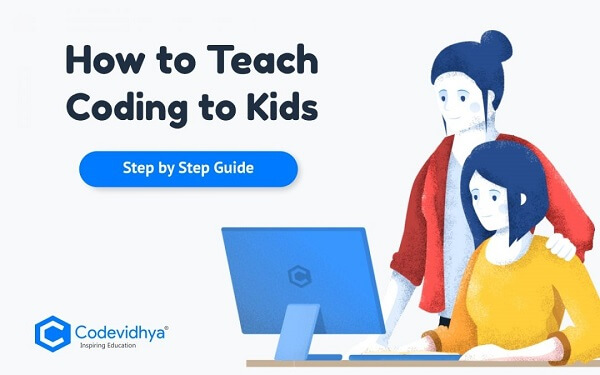How to Teach Coding to Kids

Coding has become an essential skill in the 21st century. It not only helps children develop logical thinking and problem-solving abilities but also prepares them for a future where technology will play a significant role. Teaching coding to kids may seem like a daunting task, but with the right tools and approach, it can be a fun and rewarding experience for both you and your child. This step-by-step guide will walk you through the process of introducing coding classes for kids and nurturing their coding skills.
To teach coding to kids, you’ll first need to select an appropriate programming language. Some popular options include Scratch, Blockly, and Python. Scratch and Blockly are visual programming languages specifically designed for children, while Python is a versatile and widely-used language that is beginner-friendly. Consider your child’s age, interests, and prior experience with coding when making your decision.
2. Select the Right Tools and Resources
There are many different programming language tools available for teaching coding to children, including open-source and free ones that have reached millions of children worldwide. Here are a few popular tools and resources to consider:
- Scratch: A visual programming language that allows children to create interactive stories, games, and animations through simple drag-and-drop blocks.
- Blockly: A visual programming language similar to Scratch, but with more focus on logic and algorithms.
- Code.org: A comprehensive platform offering a wide range of coding courses and resources for kids of all ages.
- Tynker: Offers coding classes for kids, with a curriculum that includes interactive games and puzzles.
3. Create a Structured Learning Plan
Develop a structured learning plan that introduces coding concepts in a gradual and systematic manner. Start with basic concepts like loops, conditionals, and variables before moving on to more advanced topics like functions and object-oriented programming. Break down each concept into smaller, digestible parts and ensure that your child has a strong foundation before introducing new concepts.
4. Make it Fun and Engaging
One of the best ways to teach coding to kids is by making it fun and engaging. Incorporate games, animations, and interactive activities into your lessons to keep your child interested and motivated. Encourage them to create their own projects and collaborate with other learners to foster a sense of community and teamwork.
5. Be Patient and Supportive
Learning to code can be challenging, and children may face obstacles along the way. Be patient and supportive, offering guidance and encouragement when needed. Celebrate their successes and help them learn from their mistakes. Remember that coding is a journey, and your child will grow and develop at their own pace.
6. Encourage Experimentation and Creativity
One of the most valuable aspects of learning to code is the ability to create and bring ideas to life. Encourage your child to experiment with different programming languages, tools, and techniques. Let them explore their interests and passions, whether it’s creating a video game, developing a mobile app, or designing a website.
7. Connect with a Community
Joining a community of learners and educators can provide invaluable support and resources for teaching coding to kids. Look for local coding clubs, workshops, or online forums where your child can interact with peers and mentors, share their work, and ask for feedback. Building a strong support network will help your child stay motivated and engaged in their coding journey.
8. Keep Learning and Evolving
As your child grows and develops, their coding skills and interests may change. Be prepared to adapt your teaching methods and resources to meet their evolving needs. Stay informed about new developments in programming languages and tools, and encourage your child to continue learning and exploring on their own.
In Conclusion
Introducing coding to kids can be a fun and rewarding experience that develops their problem-solving skills and prepares them for the future. By selecting the right programming language, tools, and resources, creating a structured learning plan, making it engaging and fun, being patient and supportive, encouraging experimentation and creativity, connecting with a community, and keeping learning and evolving, you can nurture your child’s love for coding and set them up for success in the digital age.
